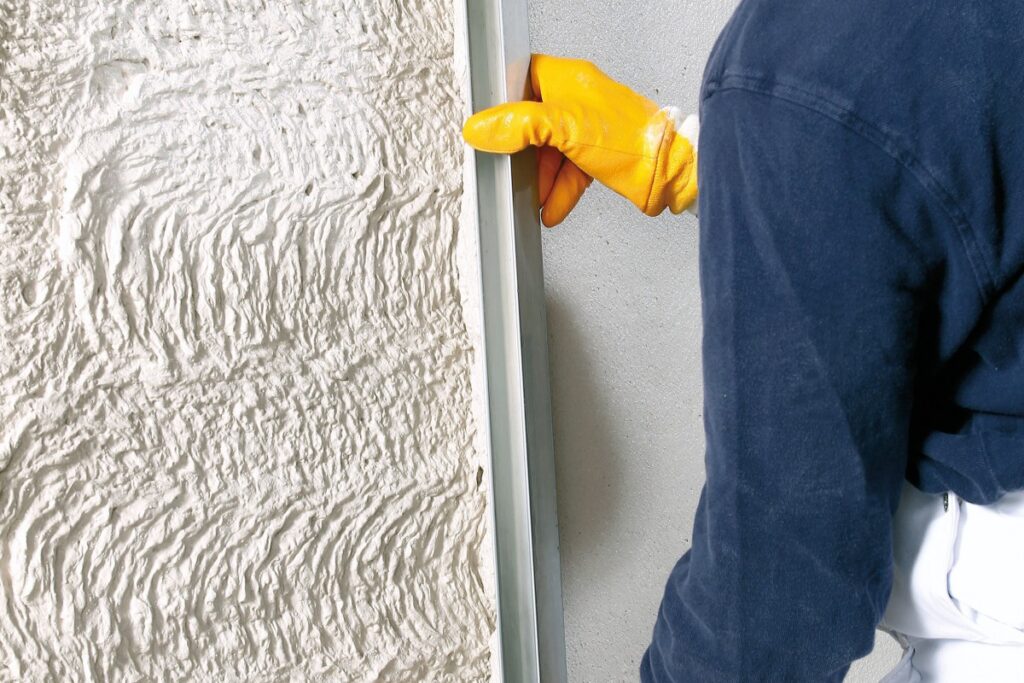Plastering stands as one of the oldest and most common finishing techniques, employed to provide a smooth and visually appealing surface to block or brick masonry walls. Not merely serving an aesthetic purpose, plastering acts as a protective shield for bricks and stones, safeguarding them against the elements like rain and wind. Various types of plasters are utilized in construction, each tailored to specific requirements in terms of finishes, ingredients, popularity, and proportions. Among these, gypsum plaster has emerged prominently in recent decades, gradually supplanting lime and cement plasters. In this discussion, we’ll delve into the properties, application methods, as well as the advantages and disadvantages of gypsum plaster.
Understanding Gypsum Plaster
Gypsum plaster, also known as plaster of Paris (POP), is a white cementing substance derived from partially or completely drying the mineral gypsum, often with the addition of specialized retarders or hardeners. When mixed with water, gypsum undergoes a chemical reaction, settling and contracting to form a solid surface. This versatile material finds its application in various projects, including false ceilings and wall installations.

History of Gypsum Plaster
The utilization of gypsum plaster traces back centuries, marking its presence as a longstanding fixture in the realm of construction owing to its exceptional characteristics. Ancient Egyptians notably employed gypsum plaster to adorn the pyramid at Cheops, showcasing its enduring legacy and effectiveness. Further attesting to its durability and performance, gypsum plaster was utilized as an internal plaster in the renowned pyramid of Giza in Egypt.
As highlighted by ‘R. Barry,’ author of “The Construction of Buildings,” the past decades have witnessed a significant surge in the use of gypsum plaster, both for undercoat and finishing applications. This surge has been so profound that gypsum plaster has largely supplanted lime and cement in contemporary construction practices.
Types of Gypsum Plaster
Gypsum plasters are categorized based on the thermal energy they receive during production:
- Gypsum Anhydrite Plaster: Heated to 170°C.
- Hemihydrate Plaster: Gypsum heated above 170°C, combined with additives like perlite and vermiculite to enhance working and setting properties.
These types of gypsum plasters cater to different applications such as casting, undercoating, finished plastering, one-coat applications, and machine-applied plastering.

Gypsum Plaster Thickness
Gypsum plaster can be applied within a range of 6 to 20mm in thickness. Typically, the undercoat thickness for walls averages around 11mm, while ceilings usually require an 8mm undercoat. For the final finish coat, a thickness of 2mm is commonly recommended.
To prevent the occurrence of cracks, it is advisable to apply a minimum thickness of 6mm for gypsum plaster. In cases where a wall requires a plaster buildup exceeding 20mm, a two-step approach is often employed. Initially, an 8-12mm dash coat of cement sand plaster is applied, followed by a gypsum plaster layer of at least 6mm to achieve a smooth finish.
Ingredients of Gypsum Plaster
Main ingredients include dry gypsum granules, water, and occasionally a small quantity of accelerator. Retarders like organic acids, dissolved substances, basic phosphates, and peptides are used to expedite the setting process. Gypsum plaster typically comes in powder form, easily mixed with water to form a paste ready for application.
Production Process of Gypsum Plaster
Gypsum, a naturally occurring calcium sulfate crystal, is mined and finely powdered. It undergoes gentle heating at around 150 degrees Celsius to evaporate water molecules, resulting in a plaster with reduced or no water content. This plaster is meticulously sealed and packaged for use.
Characteristics of Gypsum Plaster
- Lightweight, adding minimal structural burden.
- Does not expand during drying and setting, unlike cement plaster.
- High crystal water content, non-combustible, and resistant to cracking.
- Enhances the longevity of metal fittings by preventing rust.

Application Process
- Surface Cleaning: Thoroughly clean surfaces with a wire brush, ensuring removal of grease, oil, and impurities.
- Preparing Plaster: Mix gypsum plaster powder with water in a clean vessel.
- Application: Apply plaster firmly to prepared surfaces, ensuring even coverage. Allow plaster to dry fully before painting, avoiding exposure to moisture.
Benefits of Gypsum Plaster
- Smooth application, providing a neat finish suitable for painting.
- Versatile and easy to use on various surfaces, requiring less physical labor.
- Offers excellent fire resistance and fast setting times.
- Resistant to mold and fungal growth, with minimal expansion and contraction.
- Poor thermal conductivity, helping to regulate indoor temperatures.
- Environmentally friendly, as it can be recycled multiple times.
Shelf Life
Gypsum plaster typically maintains its smooth, crack-free appearance and durability for three to four months post-manufacturing. Proper storage conditions, including elevated, dry platforms, can extend shelf life up to six months.
Conclusion
Gypsum plaster stands out as a sustainable, versatile, and efficient choice for indoor plastering needs, offering a host of benefits for both builders and occupants alike.


